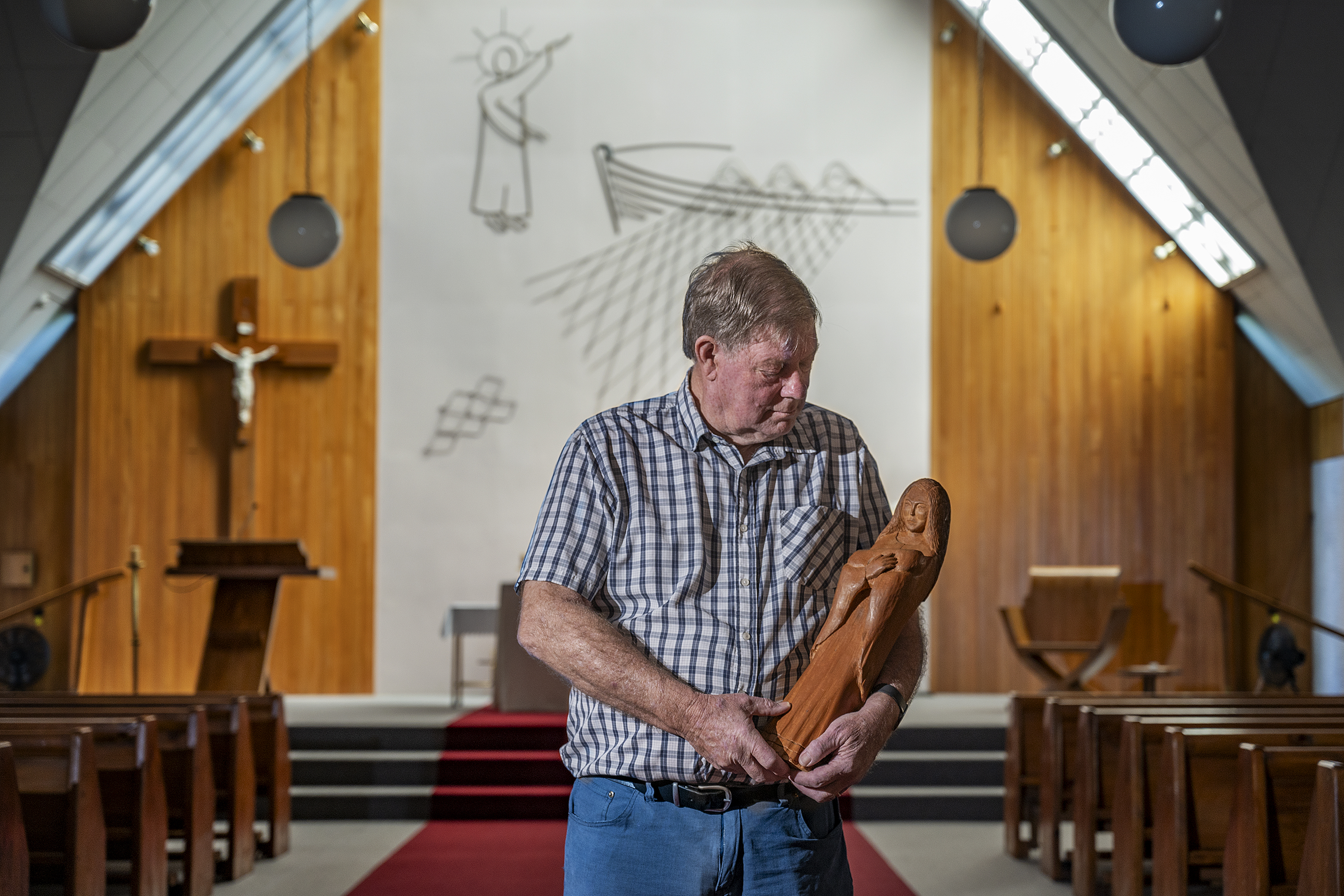The Madonna and Child returns home

BACK HOME: Lindsay Riddick, who has been busy researching St Joseph’s archives, holds a kauri carving of historical significance to the church. Photos Troy Baker E5634-08-2
News Editor
The recent return of a hand-carved kauri statue of the Madonna and Child has stirred excitement within a school and church community.
Crafted in 1973 from timber salvaged from a historic convent, the figure holds spiritual and historical significance for Whakatāne’s St Joseph’s School and St Peter Chanel Catholic Church.
The tale of its return begins in 1933, when the school was founded following the purchase of land in Kopeopeo, where a church-school was built and blessed.
The building consisted of two classrooms and a sanctuary, with the classrooms also serving as the church.
An old homestead, dating back to 1889, was also purchased and converted into a convent.
Built of kauri with a wide verandah, the villa had been transported from Auckland to Whakatāne by scow (barge).
The convent’s first occupants were three Josephite sisters: Sister Serenus Comesky, Sister Dolorosa O’Connor, and Sister Francesca Demuth.
St Joseph’s School officially opened its doors on March 1, 1933, with an initial roll of 60 pupils.

As Whakatāne’s population grew, the school expanded. By 1965, four additional classrooms and a new staffroom had been built. Attention then shifted to the convent, which had become too costly to refit and maintain. At the time, the villa was considered the oldest remaining homestead in Whakatāne.
In 1973, new brick accommodation was built for the sisters, and the 84-year-old villa was demolished.
A section of the original verandah post was preserved, and from it, Whakatāne High School mathematics teacher Murry Ellis carved a figure of the Madonna and Child.
The carving remained at St Joseph’s Whakatāne until 2016, when the sisters relocated to Mission Bay in Auckland, taking some artefacts, including the statue, with them.
Fast forward to 2025: during a reorganisation of their archives, the Sisters of St Joseph in Mission Bay rediscovered the carving and arranged for it to be returned to its original home in Whakatāne.
Whakatāne resident Lindsay Riddick, who has been researching the history of the convent and school, was surprised to receive an email about the discovery.
“I was so taken aback to hear about the statue – we had no idea it even existed,” he said.
While in Auckland on other business, Mr Riddick made a detour to Mission Bay to collect the statue, along with two hand-coloured framed photographs that also originated from the school.
“There was no ceremony – it was simply wrapped up and handed over.
“We are now looking at having a custom case carved so it will have a fitting home in the church,” he added.
The statue is regarded as an important piece of the church’s history and will be officially welcomed back to Whakatāne soon.
